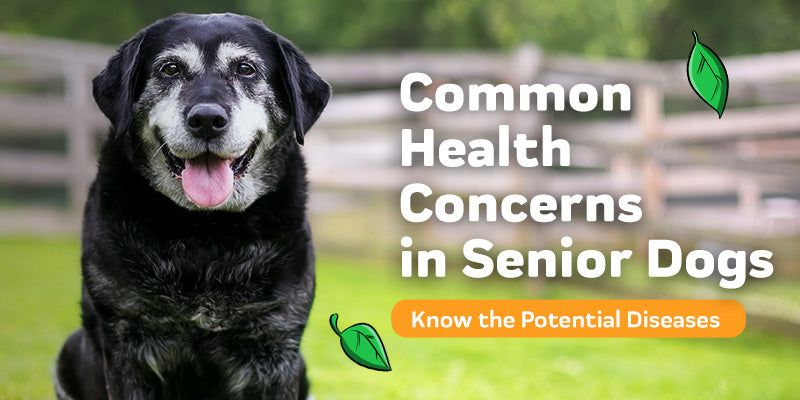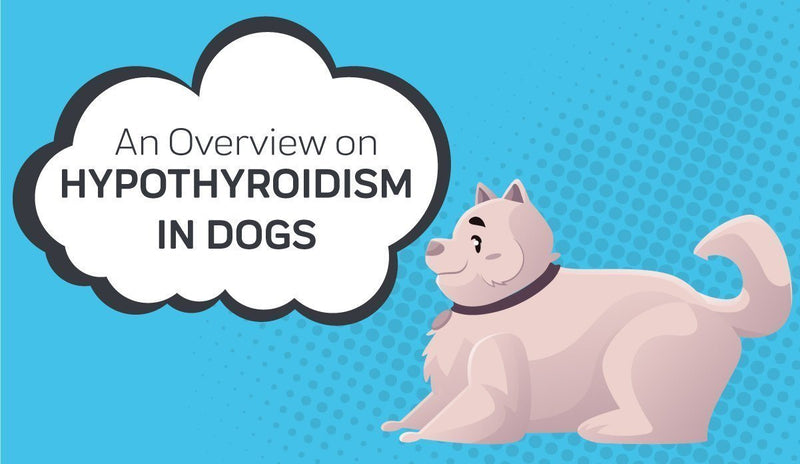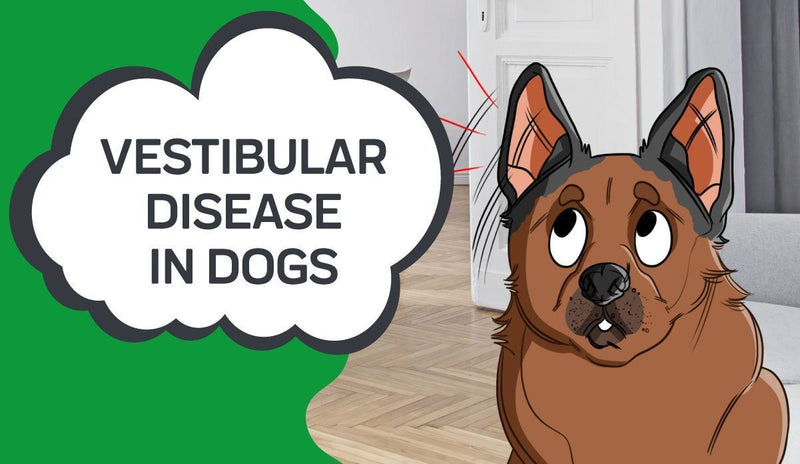Hepatic Lipidosis in cats, or fatty liver disease, is a common and severe disease in cats that requires prompt attention. This post will tell you everything you need to know about hepatic lipidosis so you can prevent it, detect it, and help a cat who's been diagnosed with it. We'll also go over how CBD oil can help.
What is Hepatic Lipidosis?
Hepatic lipidosis occurs when the cat's liver collects too much fat. This often happens when the cat's body goes into starvation mode, due to undernourishment or refusal to eat, and begins using fat for energy rather than protein as it normally would. A cat's body isn't made to run off of fat or metabolize that much fat in that period of time, so their liver can't process it fast enough. When overloaded this way, the cat's liver collects the fat and they can develop fatty liver disease or hepatic lipidosis in a pretty short period of time.
Hepatic Lipidosis Symptoms
Hepatic lipidosis can occur suddenly or gradually over time, depending on the extent of the lack of protein. It isn't wise to rule out the disease based on how quickly they came down with it or how fast their symptoms have progressed.
Symptoms that your cat could develop hepatic lipidosis:
- stress
- behavior changes
- lack of appetite
- picky eating
Hepatic lipidosis symptoms include:
- weight loss
- muscle wasting
- vomiting
- diarrhea
- constipation
- tiny amounts of poo
- excess saliva
- depression
- hiding
- downward cast to the head
- jaundice
- lethargy
- collapsing
- seizures
- death
Loss of appetite, depression, and occasional vomiting are the first signs a cat owner can usually detect and should be taken very seriously. The sooner you can get your cat to the vet, the better the outcome.
Causes of Hepatic Lipidosis in Cats
Hepatic lipidosis can be caused by a wide variety of factors.
Malnutrition, either from a slightly insufficient diet for a long period of time or from anorexia in the short term, can cause the cat's body to start metabolizing fat and lead to a fatty liver, or hepatic lipidosis.
Malnutrition has many potential causes:
- chronic anxiety
- acute stress from a new pet, a new living arrangement, a new family member
- food the cat doesn't like
- getting lost
- another disease that causes lack of appetite or difficulty eating
Conversely, obesity can cause fat to collect in the liver because the cat's body isn't made to handle that much fat processing.
A cat that has been overweight who suddenly loses their appetite is at particular risk of developing hepatic lipidosis as they have more fat to process. Be particularly proactive with them about getting them to eat and taking them to vet at the first signs of illness.
Other diseases like diabetes, liver disease, cancer, kidney disease, and pancreatitis can also lead to hepatic lipidosis.
It is not uncommon for the doctor to not be sure about the cause or to find that several factors went together to cause the disease.
Preventing Hepatic Lipidosis in Cats
Be mindful of your cat's weight to ensure your cat doesn't become overweight or obese and because of that doesn't increase their chances of developing diabetes. If your cat is already overweight or obese, discuss their diet and feeding routine with the vet to ensure you don't overdo any weight loss attempt. It can be tricky finding the right diet for an individual cat's needs.
Ensure they are getting enough food. Your cat should have access to a moderate amount of healthy food at all times so they can eat small portions as needed. This is what their bodies were made to do in the wild. Try to have at least a rough estimate of how much food they are eating in a day so you can tell if they start eating less. You might think of bowlfuls or measure out specific amounts, whatever works for you.
When introducing your cat to a new food, do so gradually. Cats can have trouble adjusting to change and you don't want an abrupt change to involve their diet, if you have any control over it.
Be mindful of stressors. Some cats have no problem with you having human guests over, but others will hide or exhibit odd behaviors. They may hide so long they don't come out to eat, or they may suffer lingering stress from it that lowers their appetite. Monitor your cat's behavior when you bring home a new pet or baby. When moving or making changes in the home, try to keep normalcy where you can to limit their stress. Make a mental or physical note of potential stressors so you can recognize that they may be the cause should your cat stop eating.
Diagnosing Hepatic Lipidosis in Cats
If your cat stops eating or becomes super finicky, try giving them their favorite food to see if they will eat that and if they have any difficulty doing so. There is a profound difference in not wanting to eat, being too nauseated, or having difficulty chewing or swallowing, and all three are important clues for determining the cat's diagnosis.
Reduce any stressors in the cat's environment that you can possibly control.
If your cat does not very quickly resume their normal eating habits, contact the vet for advice or to schedule an appointment.
When you take your cat to the vet, you'll need to tell them the cat's symptoms, potential or known stressors, and how long it's been since the cat ate normally. You might make notes to ensure you don't forget any symptoms and that you remember times or amounts of food.
The vet may perform a urinalysis, a blood test, or both, to check for hepatic lipidosis, and they may want to do an ultrasound to look at the cat's organs. It may be necessary to perform a biopsy to confirm the diagnosis.
Depending on the cat's symptoms, potential causes, and the cat's health history, the vet may also look for other diseases that may have caused or be interrelated with the hepatic lipidosis. For instance, another disease may be causing nausea, lack of appetite, liver disease, or sores in the mouth. This will have to be treated as well. When and how it's treated may depend on whether the cat can eat with the disease or how dangerous the other disease itself is, meaning it may have to make top priority if the cat can't eat, or it might wait until after the fatty liver is treated if it is secondary and/or less threatening.
Treatment for Hepatic Lipidosis in Cats
If the cat cannot or will not eat voluntarily by mouth, the vet may keep them in the hospital and feed them through a tube while their liver clears the fat. They may also require fluids for dehydration and to help the liver process the fat.
They may need anti-vomiting medications, appetite stimulants, or other medications for secondary conditions. It may be possible for the cat to come home and be fed via a syringe. When the cat can eat on their own, the vet may prescribe a special diet for them.
After the cat's immediate health is secured, the vet will then want to make sure there are no long-term damages from the disease. This will, of course, require more tests.
Outlook for a Cat with Hepatic Lipidosis
The sooner you notice and address the lack of food or beginnings of hepatic lipidosis, the better. It's possible you can catch the eating problem before it becomes hepatic lipidosis, but even if you can't, prompt vet care will make the cat's condition much easier to treat.
How to Help Manage Hepatic Lipidosis with CBD Oil
CBD oil for cats may help with hepatic lipidosis in several ways:
- reduce stress
- provide additional nutrition
- improve mood
- foster a healthy appetite
- relieve nausea and other digestive issues
- reduce the number and severity of seizures
Science has found that both human and cat bodies have an endocannabinoid system. Yes, that's right. Fifi is generating and relying on their own cannabinoids right this minute. If their body isn't producing enough cannabinoids or they could use a boost to address a problem, an external cannabinoid like cannabidiol from hemp helps the body better produce its own cannabinoids. This isn't like many other drugs that force a body to do something unnatural that happens to be beneficial, cannabidiol is promising to help regulate the body's natural functions, generating a gentler but powerful result.
Using CBD Oil
There are many CBD oil products to choose from:
- oil tinctures
- extract concentrates
- capsules
- treats
Oil tinctures are a great way to combine ease and control. They mix cannabidiol with a carrier oil for easier delivery and often mix in a flavor to cover the distinctive taste of hemp that many humans and cats aren't fond of. If you'd like to skip the flavor, you can get an unflavored one and mask the taste in food. Oil tinctures come in droppers or sprayers to be delivered straight to the cat's mouth or put in their food. It is easy to measure complex doses with droppers and sprayers. Droppers offer the most control.
Extract concentrates are just cannabidiol, and the product comes out in little beads. These beads can be measured to find a specific dose. There is no flavoring, so you'll have to mask it yourself if the cat doesn't like it, but it's the purest and most cost-effective way to get CBD oil.
CBD Capsules for cats are easy for cats who don't mind pills. Just pop; there's no taste or measuring. If you need a different dose than can be found in one capsule, you just have the option to give them another capsule, which amounts to a double dose.
Treats are the easiest way to give a cat CBD oil because they're treats. They even come in crunchy and chewy varieties to match the treats your cat already loves. Like capsules, you can only measure by the number of treats.
Dosing CBD Oil
Dosing CBD isn't an exact science. You can research the ailment and symptoms your cat has to discover what is touted by manufacturers, scientists, or vets and read user accounts to see what is supposed to work.
Then you'll want to start with the lowest recommended dose. This is because some ailments actually respond better to a lower dose, and because when you're tweaking the dose to find the right one, it's easier to work up than down.
With tweaking, you'll want to go slowly. Wait a few weeks, if possible. If it's not possible, at least try to wait 2 to 4 days. Some results from CBD oil can be seen immediately, but the full effects of a dose can take a few weeks to appear. If you change too frequently, you'll never see what an individual dose does before moving on to another and you'll never figure out which one is right.
Be aware that very young, old, small, large, and sick cats will have special dosing requirements. Ask your vet for help with your cat's individual needs.
Risks associated with CBD Oil
One of the benefits of CBD oil is that it poses very few risks. That being said, there are still some things you should know to keep your cat as safe as possible.
While there's never been an account of a cat overdosing on CBD oil, they can experience sedation, loss of appetite, and diarrhea if they consume very large doses. You don't want to add any of that to their list of issues. Thankfully, it's not easy to do.
CBD oil impacts how the liver absorbs medication, making the dose work differently than would normally be expected. This means that if your cat is currently taking a medication, you should ask the vet if giving your cat CBD oil will impact their medication. When you take your cat to the vet, you'll also need to tell the vet you're giving them CBD oil so they can treat them accordingly.
CBD oil has not been approved by the FDA at this time. So, while traditional medications may have scary side effects and risks, they also are more well-known and provide a certain level of guarantee when it comes to effectiveness that CBD oil can't just yet. Scientists are proving exciting things about CBD oil, but this process is in its infancy and not enough for guarantees yet. CBD oil promises a viable, gentle way of helping cats who can't take traditional medications or who are finding the side effects of traditional medications too much to bear without assistance. Your vet should be willing to discuss CBD oil as a primary or secondary treatment option, but if they aren't, you can look for a holistic vet.
Purchasing CBD Oil
When purchasing a CBD oil product, look for the following information.
Is it full-spectrum or CBD isolate?
CBD isolate is powered by just the cannabidiol. Full-spectrum cannabidiol includes other cannabinoids, terpenes, and nutrients found in the hemp plant. Most people prefer full-spectrum, looking to the broader factors as promise of more benefits, but some people say CBD isolate actually worked best for them. If your cat is suffering from poor nutrition for any reason, full-spectrum CBD oil may provide the added benefit of supplementing their nutrient intake brought by the entourage effect. You can try full-spectrum first, and if it doesn't work for you, try CBD isolate before giving up on CBD altogether.
Has it been tested?
Any reputable CBD oil manufacturer will provide third-party lab test results for each of their products on their website. You'll want to check, first, that they provide them and, second, what they say. This is necessary because, tragically, some CBD oil manufacturers do not sell what they claim. There may be unsafe cannabidiol, too little cannabidiol, or no cannabidiol at all in their products. Even if the product is legitimate, you should still look at the test results so you are informed about what you're giving your cat.
Where did it come from?
You should check the manufacturer's website to ensure they say where they acquired their hemp and/or cannabidiol. Some manufacturers grow and extract the hemp themselves, others acquire one or the other from someone else. Either way, you should be able to educate yourself as to whether it was grown in a country with safe regulations.
How was it extracted?
No matter who extracted it, you should be told the method. CO2 is the safest and purest method of extracting cannabidiol, so look for it.
What is in it?
It's always a good idea to look for products with as few ingredients as possible. The fewer ingredients, the less likely something unsafe, unnecessary, or potentially allergenic is in there. Most CBD oil products claim to be all-natural because the target market likes that, but it's also possible to get all organic products.
Innovations from Innovet
Innovet strives to provide relief for pets suffering from hard-to-treat ailments. If your cat with hepatic lipidosis isn't helped by traditional methods or current CBD oil products, let us know so we can try to find a solution for your cat's individual needs.
Sources:
Feline Hepatic LipidosisCats with severe hepatic lipidosis
Hepatic Lipidosis
Feline Hepatic Lipidosis
Hepatic Lipidosis in Cats

Thanks for stopping by!
P.S. We Love You!
Sincerely,
The Innovet Team
Please do not ask for emergency or specific medical questions about your pets in the comments. Innovet Pet Products is unable to provide you with specific medical advice or counseling. A detailed physical exam, patient history, and an established veterinarian are required to provide specific medical advice. If you are worried that your pet requires emergency attention or if you have specific medical questions related to your pet’s current or chronic health conditions, please contact or visit your local/preferred veterinarian, an animal-specific poison control hotline, or your local emergency veterinary care center.
Please share your experiences and stories, your opinions and feedback about this blog, or what you've learned that you'd like to share with others.


















